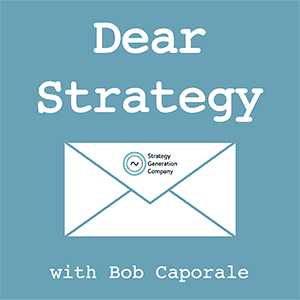Dear Strategy:
“What is the difference between a product-based organization and a market-based organization, and how does that translate into product and marketing strategies?”
Full disclosure – this question is actually from me. Not because I don’t know the answer, but because I promised in my last post that I would address this subject in a future post. And since I didn’t feel like waiting for someone else to ask about it, I figured I would do it myself!
So, let’s set the stage here. For smaller businesses with one type of product sold into one or more markets, this discussion is a moot point. Those companies are, by definition, structured by product – plain and simple.
But what happens when your company has many different types of products sold into many different types of markets? In this case, you have options as to how you want to organize. And this is exactly the dilemma that many larger companies face.
Large, complex companies with multiple product lines will typically assign product managers to look over each of their portfolios as mini businesses. The job of a product manager, then, will be to set the overall strategy for his or her product business, decide on what new products should be developed and invested in, and manage the performance of existing products that are already in market. This structure allows companies to maintain a small-business level of focus within a large-business environment.
But really large companies who play in many different types of markets may take this structure even one step further. In addition to product managers overseeing portfolio businesses, they may also assign market managers to oversee market segment businesses. This is more common in business-to-business type companies that participate in multiple vertical markets such as oil and gas, petrochemical, pulp and paper, food and beverage, etc.
In this case, product managers would be responsible for determining which markets they want to sell their products into, and market managers would be responsible for determining exactly how those products would collectively be sold into their respective market segments. So, it’s pretty easy to see how a structure like this could get a bit, well… messy.
If product managers and market managers are fully equivalent and fully aligned, then everything should theoretically run pretty smoothly. Product managers would decide on which markets they want to target, and then market managers would take all those inputs and consolidate them into product bundles that can be sold into their respective market segments.
Or… is it that market mangers would decide on which products should be sold into their markets and then product managers would develop those products accordingly?
And that’s exactly where the problem comes in – knowing which strategy should ultimately take the lead.
Here’s the easy answer: In a product-based organization, the product strategy should take the lead. In a market-based organization, the market strategy should take the lead. And that decision will usually have more to do with how the company is organized from a financial standpoint (i.e. how the business is measured and tracked) than anything else.
“In a product-based organization, the product strategy should take the lead. In a market-based organization, the market strategy should take the lead.”
It’s important to note here that product and market strategies should contain essentially the same elements. They both examine the market, the industry, and the business; and they both decide what actions the company needs to take in order to meet its strategic goals. The only difference has to do with the scope of what each type of strategy covers.
Product strategies are written around a group of products, whereas market strategies are written around a group of markets. But both types of strategies should still be written around what the customers (aka the markets) ultimately want to buy. In other words, both product and market strategies should be “market-driven” in their approach. Which means that a company doesn’t have to be organized around markets for them to develop “market-led” strategies.
So, I hope all this talk of market and product and market again hasn’t confused you even more! But, just in case it has, here’s the bottom line: Organize yourself however you want – just make sure that all of your strategies focus on satisfying your customers’ needs. Then everything else will somehow fall into place.
Listen to the podcast episode
Dear Strategy: Episode 098

###
Are you interested in strategy workshops for your product, marketing, or business managers? If so, please be sure to visit Strategy Generation Company by clicking the link below:
 Bob Caporale is the founder of Strategy Generation Company, the author of Creative Strategy Generation and the host of the Dear Strategy podcast. You can learn more about his work by visiting bobcaporale.com.
Bob Caporale is the founder of Strategy Generation Company, the author of Creative Strategy Generation and the host of the Dear Strategy podcast. You can learn more about his work by visiting bobcaporale.com.







